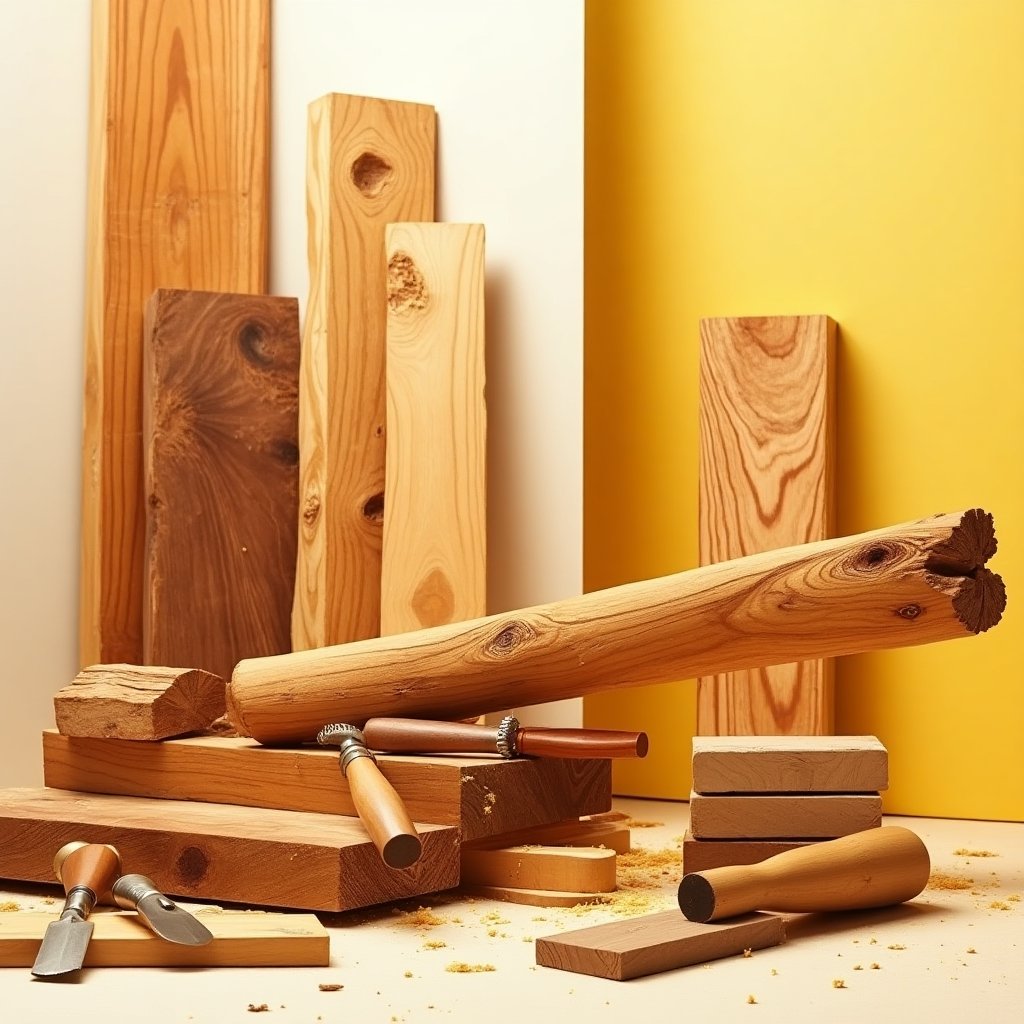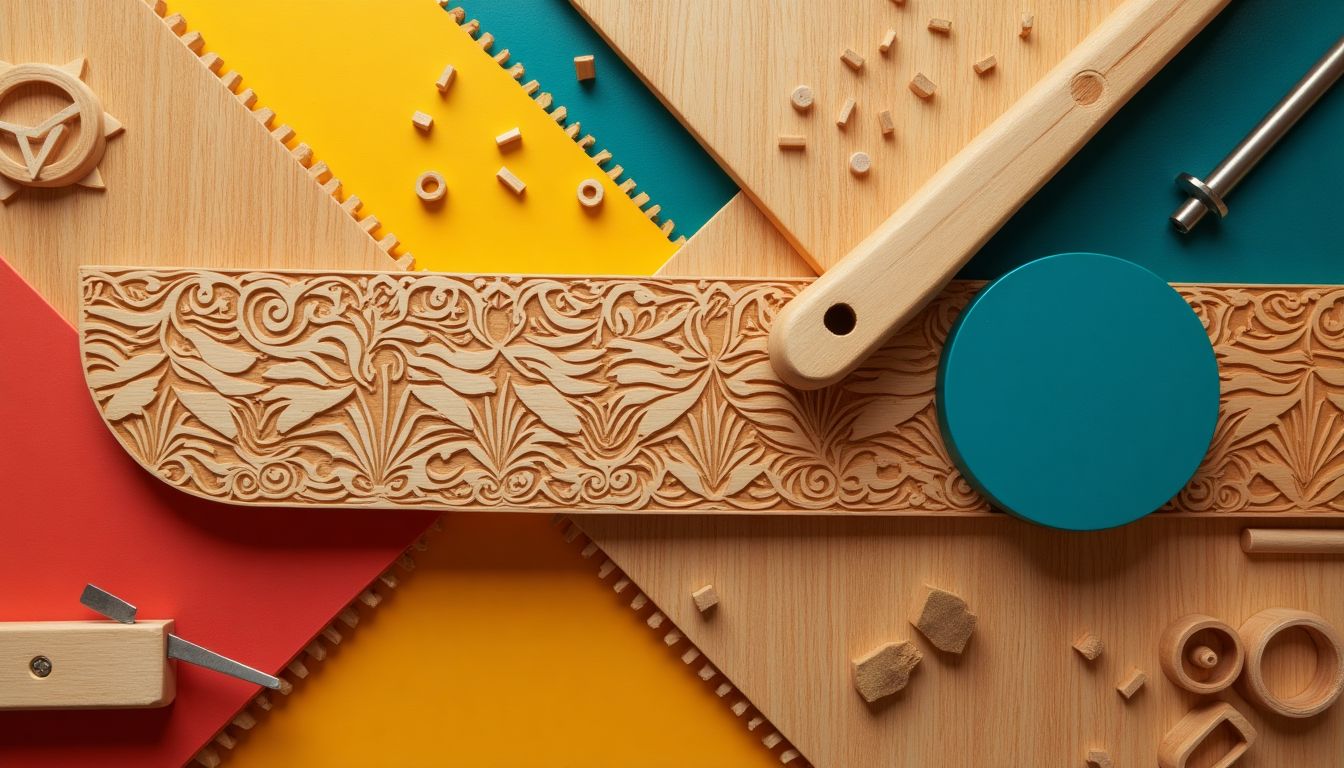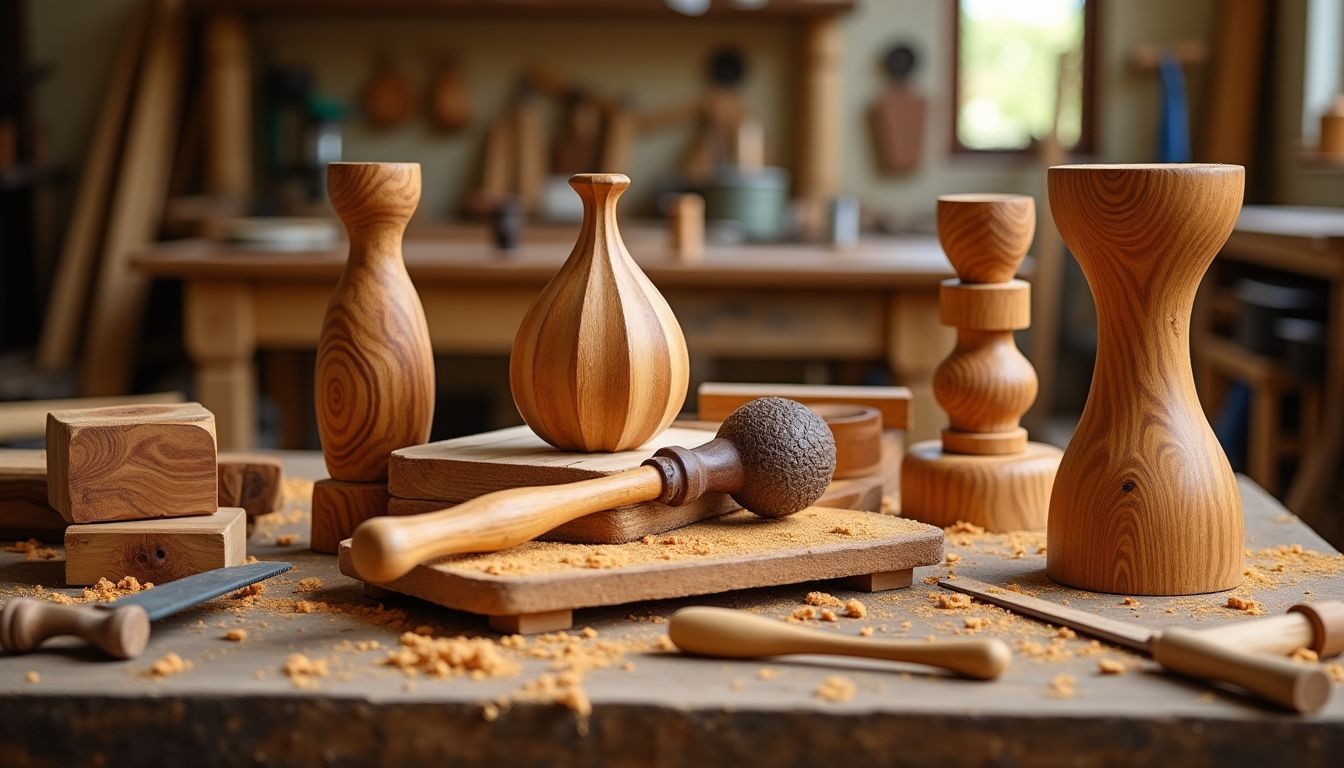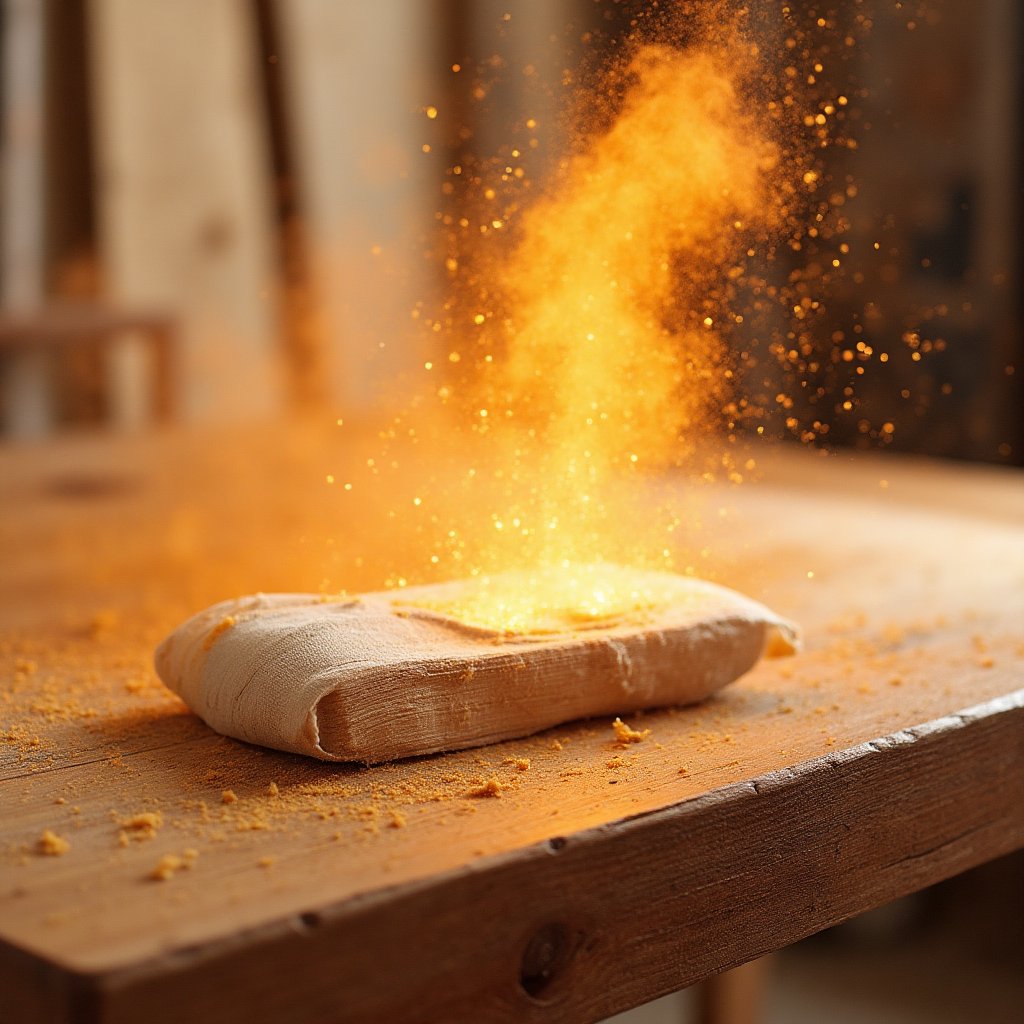Woodworking is the kind of craft that sneaks up on you. One day, you’re assembling an IKEA bookshelf with a hex key and a prayer, and the next, you’re elbow-deep in sawdust, debating the merits of dovetail joints versus mortise-and-tenon. It’s a skill that has shaped human history, from the wooden wheels of ancient Mesopotamia to the intricate cabinetry of Thomas Chippendale. But what exactly is woodworking? Is it just cutting wood and hammering nails, or is there more to it? Spoiler alert: it’s way more.
At its core, woodworking is the art and science of creating objects from wood. It’s about transforming raw timber into functional furniture, stunning sculptures, or even the humble cutting board that holds your morning avocado toast. It’s a craft that has been celebrated by luminaries like George Nakashima, whose organic furniture designs blurred the line between art and utility, and James Krenov, who championed the idea of woodworking as a deeply personal and meditative practice. Even Leonardo da Vinci dabbled in woodworking, sketching designs for wooden machines that were centuries ahead of their time.
This article will take you on a journey through the world of woodworking, from its ancient roots to its modern-day applications. Whether you’re a beginner dreaming of your first workbench or a seasoned pro looking to refine your craft, this guide will help you understand what woodworking truly is—and why it’s so much more than just cutting wood.
1. The History and Evolution of Woodworking
Woodworking is one of the oldest crafts in human history, dating back to prehistoric times. It’s a craft that has evolved alongside humanity, from the first wooden tools to the intricate furniture and structures we admire today. Let’s take a closer look at how woodworking has changed over the centuries.
1.1 Early Beginnings: From Tools to Art
Long before power tools and CNC machines, early humans were already mastering the art of woodworking. The first wooden tools, like spears and digging sticks, were essential for survival. These early creations were simple but effective, showcasing humanity’s ingenuity and resourcefulness.
As civilizations developed, so did woodworking. The ancient Egyptians, for example, were masters of the craft, creating intricate furniture like chairs, beds, and chests. Some of these pieces, like the famous Tutankhamun’s funerary mask, were adorned with gold and precious stones, but the wooden frames were the backbone of these masterpieces. Similarly, ancient Chinese woodworkers developed advanced joinery techniques, like the mortise-and-tenon joint, which allowed them to create sturdy structures without nails or glue.
1.2 The Middle Ages to the Industrial Revolution
During the Middle Ages, woodworking became a specialized trade, with guilds regulating the craft and ensuring high standards of quality. Woodworkers, or “wrights,” were highly respected, and their skills were in demand for everything from building cathedrals to crafting furniture for the nobility.
The Industrial Revolution brought significant changes to woodworking. Mass production became possible, thanks to innovations like the steam engine and the circular saw. While this made wooden goods more affordable and accessible, it also led to a decline in traditional handcrafted techniques. However, the craftsmanship of the past wasn’t forgotten—it laid the foundation for the modern woodworking renaissance.
1.3 Modern Woodworking: A Blend of Tradition and Technology
Today, woodworking is a blend of tradition and technology. On one hand, there’s a renewed interest in handcrafted, artisanal pieces, driven by a desire for quality and sustainability. On the other hand, modern tools and machinery have made woodworking more efficient and accessible than ever before.
For example, CNC machines and 3D printers are now used to create intricate designs with precision and speed. At the same time, many woodworkers are returning to traditional techniques, like hand-carving and joinery, to create unique, one-of-a-kind pieces. This fusion of old and new is what makes modern woodworking so exciting—and so full of possibilities.
2. Types of Woodworking
Woodworking is like a buffet—there’s something for everyone, whether you’re into building furniture, carving intricate designs, or just hammering nails into wood for fun (we don’t judge). This section breaks down the different types of woodworking, so you can find your niche or, who knows, maybe try them all.
2.1 Carpentry
Carpentry is the backbone of woodworking. It’s all about building structures—think houses, decks, and barns. If you’ve ever watched a home renovation show and thought, “I could do that,” carpentry might be your calling. Tools like hammers, saws, and levels are your best friends here. And let’s not forget the YouTube tutorials that make everything look easy until you accidentally nail your thumb to a 2x4.
2.2 Furniture Making
Furniture making is where woodworking meets art. Whether it’s a rustic farmhouse table or a sleek mid-century modern chair, this type of woodworking lets you create pieces that are both functional and beautiful. Iconic styles like IKEA’s minimalist designs or the timeless elegance of Herman Miller show just how versatile furniture making can be. Plus, who doesn’t love bragging, “I made that!” when guests admire your coffee table?
2.3 Wood Carving and Sculpting
If you’ve ever wanted to turn a block of wood into a masterpiece, wood carving is for you. This is the fine art of woodworking, where chisels and gouges replace saws and drills. From intricate wooden sculptures to detailed relief carvings, the possibilities are endless. Just remember, it’s not about how many bandages you go through—it’s about the journey (and the Instagram-worthy final product).
2.4 Cabinetry and Joinery
Cabinetry is the unsung hero of woodworking. It’s all about precision—think drawers that slide like butter and cabinets that fit perfectly into awkward corners. Techniques like dovetail joints and mortise-and-tenon joints are the secret sauce here. And if you’ve ever struggled with an IKEA cabinet, you’ll appreciate the skill it takes to make one from scratch.
2.5 Woodturning
Woodturning is like pottery, but with wood. Using a lathe, you can create symmetrical objects like bowls, vases, and even baseball bats. It’s mesmerizing to watch a block of wood transform into something beautiful with just a few spins. Just be careful—lathes are powerful tools, and no one wants to see a bowl become a projectile. Safety first, folks!
3. Essential Tools and Materials for Woodworking
Every woodworker needs the right tools and materials to bring their vision to life. Think of it like cooking—you can’t make a gourmet meal with just a spoon and a microwave. Here’s your shopping list for woodworking success.
3.1 Hand Tools
Hand tools are the OG of woodworking. They’re simple, reliable, and don’t require batteries (hallelujah!). Here’s what you’ll need:
- Saws: A good handsaw or coping saw is a must for cutting wood. Pro tip: Don’t use your kitchen bread knife—it won’t end well.
- Chisels: Perfect for carving and shaping. Just make sure they’re sharp—dull chisels are about as useful as a screen door on a submarine.
- Planes: These are used to smooth wood surfaces. Think of them as the sandpaper of the hand tool world.
- Hammers: For when you need to persuade wood to cooperate. Bonus points if you name yours.
3.2 Power Tools
Power tools are the superheroes of woodworking. They’re fast, efficient, and make you feel like a DIY god. Here are the essentials:
- Table Saws: The workhorse of any woodshop. Perfect for straight cuts and ripping large pieces of wood.
- Routers: These versatile tools can cut grooves, shape edges, and even carve designs. They’re like the Swiss Army knife of power tools.
- Drills: For making holes and driving screws. Cordless drills are a game-changer—no more tripping over cords!
- Sanders: Because no one likes splinters. Orbital sanders are great for smoothing surfaces quickly.
If you’re looking to stock up, check out Amazon’s power and hand tools selection for some great deals.
3.3 Types of Wood
Not all wood is created equal. Here’s a quick guide to the most common types:
- Hardwoods: Dense and durable, hardwoods like oak, maple, and walnut are perfect for furniture and flooring. They’re also more expensive, so use them wisely.
- Softwoods: Lighter and easier to work with, softwoods like pine and cedar are great for beginners. They’re also more affordable, which is always a plus.
- Plywood: Made from thin layers of wood glued together, plywood is strong, versatile, and budget-friendly. It’s the tofu of the woodworking world—it goes with everything.
3.4 Finishing Materials
Finishing is the cherry on top of your woodworking project. It protects the wood and enhances its natural beauty. Here’s what you’ll need:
- Stains: Add color and depth to your wood. Just remember to test it on a scrap piece first—no one wants a neon yellow coffee table.
- Varnishes: Provide a protective layer and a glossy finish. Perfect for high-traffic areas like tabletops.
- Sealants: Keep moisture out and prevent warping. Think of them as sunscreen for your wood.
For more tips on choosing the right finish, check out Wood Magazine’s guide.
4. Techniques and Processes in Woodworking
Woodworking is a craft that demands precision, patience, and a deep understanding of techniques. Whether you're building a simple shelf or crafting an intricate piece of furniture, mastering these processes is key to creating something both functional and beautiful. Let’s break down the essential techniques every woodworker should know.
4.1 Measuring and Marking
Accuracy is the backbone of woodworking. A single misaligned cut can throw off an entire project. That’s why measuring and marking are the first steps in any woodworking process. Tools like tape measures, speed squares, and marking gauges are indispensable. Here’s how to get it right:
- Measure Twice, Cut Once: This age-old adage is the golden rule of woodworking. Always double-check your measurements before making a cut.
- Use a Sharp Pencil: A fine, sharp pencil ensures precise markings. Avoid markers or pens, as they can leave thick lines that lead to inaccuracies.
- Marking Gauges for Precision: These tools help you scribe lines parallel to the edge of the wood, ensuring consistent measurements.
4.2 Cutting and Shaping
Once your measurements are spot-on, it’s time to cut and shape the wood. This is where the magic happens, but it’s also where mistakes can occur if you’re not careful. Here’s a breakdown of the tools and techniques:
- Hand Saws vs. Power Saws: Hand saws like the Bahco handsaw are great for small projects, while power saws like the DeWalt table saw are ideal for larger, more complex cuts.
- Shaping with Planes and Chisels: Hand planes and chisels allow you to refine the shape of your wood. For example, a Lie-Nielsen bench plane can smooth rough edges, while a sharp chisel can carve intricate details.
- Safety First: Always wear safety goggles and keep your fingers clear of blades. Use push sticks for narrow cuts on a table saw.
4.3 Joinery
Joinery is the art of connecting wood pieces to create sturdy, long-lasting structures. It’s what separates amateur projects from professional-quality work. Here are some common joinery techniques:
- Dovetail Joints: Known for their strength and beauty, dovetail joints are often used in drawers and cabinets. They require precision but are worth the effort.
- Mortise-and-Tenon Joints: This classic joint involves a tenon (a protruding piece of wood) fitting into a mortise (a hole). It’s commonly used in furniture making.
- Biscuit Joints: Biscuit joiners use small, oval-shaped pieces of wood (biscuits) to align and strengthen joints. They’re great for edge-to-edge connections.
4.4 Sanding and Finishing
The final touches can make or break a woodworking project. Sanding smooths out rough edges, while finishing protects the wood and enhances its natural beauty. Here’s how to nail this step:
- Start with Coarse Grit: Begin with 80- or 100-grit sandpaper to remove major imperfections, then work your way up to finer grits (220 or higher) for a smooth finish.
- Apply Finish Evenly: Whether you’re using stain, varnish, or oil, apply it in thin, even coats. Use a brush or cloth, and always follow the grain of the wood.
- Protect Your Work: Sealants like polyurethane or wax provide a protective layer that keeps your project looking great for years.
5. Applications of Woodworking in Modern Life
Woodworking isn’t just about creating beautiful objects—it’s a skill that has practical applications in nearly every aspect of modern life. From home improvement to artistic expression, woodworking plays a vital role in shaping our world. Let’s explore some of the most impactful applications.
5.1 Home Improvement and DIY Projects
The rise of DIY culture has made woodworking more accessible than ever. Homeowners are tackling projects like never before, from building custom shelves to crafting unique furniture. Here’s why woodworking is a DIY favorite:
- Cost-Effective: Building your own furniture or home decor can save you money compared to buying pre-made items.
- Customization: DIY projects allow you to create pieces that perfectly fit your space and style.
- Skill Building: Each project teaches new skills, making you a more confident and capable woodworker.
Popular DIY projects include:
- Floating shelves
- Farmhouse tables
- Outdoor garden benches
5.2 Artistic and Decorative Woodworking
Woodworking isn’t just functional—it’s also a form of artistic expression. From intricate carvings to modern sculptures, wood can be transformed into stunning works of art. Here are some examples:
- Wood Carving: Artists like Whittling Wanderer create intricate designs using chisels and gouges.
- Wood Sculptures: Sculptors like David Nash use large pieces of wood to create monumental works of art.
- Wall Art: Wooden wall hangings and signs add a rustic touch to any home.
5.3 Commercial and Industrial Woodworking
On a larger scale, woodworking is a cornerstone of industries like construction and manufacturing. From custom cabinetry to architectural elements, woodworking plays a crucial role in creating functional and beautiful spaces. Here’s how:
- Cabinetry: Custom cabinets are a staple in kitchens and bathrooms, offering both storage and style.
- Architectural Elements: Wooden beams, trusses, and paneling add character to homes and buildings.
- Furniture Manufacturing: Companies like IKEA rely on woodworking to produce affordable, stylish furniture.
5.4 Sustainable Woodworking Practices
As environmental concerns grow, sustainable woodworking has become a priority for many craftsmen. By using eco-friendly materials and techniques, woodworkers can reduce their environmental impact. Here’s how:
- Reclaimed Wood: Using wood from old buildings or furniture reduces waste and gives new life to discarded materials.
- FSC-Certified Wood: The Forest Stewardship Council certifies wood that’s harvested responsibly, ensuring forests are protected.
- Low-VOC Finishes: Volatile organic compounds (VOCs) in stains and finishes can harm the environment. Opt for low-VOC or natural finishes instead.
Woodworking is more than a craft—it’s a way to create, innovate, and connect with the world around us. Whether you’re building a simple shelf or crafting a masterpiece, the possibilities are endless.
6. AI Solutions: How Would AI Tackle Woodworking?
Artificial Intelligence (AI) is no longer just a buzzword—it’s a transformative force reshaping industries, and woodworking is no exception. From designing intricate furniture to optimizing material usage, AI is poised to revolutionize the craft in ways that were unimaginable just a decade ago. Let’s explore how AI can tackle woodworking, from design to execution, and even education.
6.1 AI-Powered Design Tools
Imagine having a personal design assistant that can generate custom woodworking plans in minutes. AI-powered design tools like SketchUp and Fusion 360 are already making this a reality. These tools use machine learning algorithms to analyze user inputs and create detailed blueprints, complete with measurements, joinery techniques, and material lists. For beginners, this means no more guesswork or trial-and-error. For professionals, it’s a way to streamline the design process and focus on the creative aspects of woodworking.
AI can also predict potential design flaws before they happen. By simulating stress tests and analyzing structural integrity, AI ensures that your project is not only beautiful but also durable. Think of it as having a virtual engineer on your team, ready to catch mistakes before they cost you time and materials.
6.2 Precision and Automation in Woodworking
Precision is the hallmark of great woodworking, and AI is taking it to the next level. CNC (Computer Numerical Control) machines, powered by AI, can cut, carve, and shape wood with micron-level accuracy. Companies like ShopBot are already integrating AI into their machines, allowing woodworkers to achieve results that would be impossible by hand.
But it doesn’t stop there. Robotic arms, guided by AI, can handle repetitive tasks like sanding, drilling, and even assembling complex joints. This not only reduces human error but also frees up time for woodworkers to focus on the artistic side of their craft. Imagine a robotic assistant that can sand a tabletop to perfection while you work on carving intricate details—sounds like a dream, right?
6.3 AI for Material Optimization
Waste not, want not. AI can analyze your wood stock and calculate the most efficient way to cut and shape it, minimizing waste and maximizing output. Algorithms can even suggest alternative materials or designs if your original plan isn’t feasible with the wood you have. This is a game-changer for sustainability, as it reduces the environmental impact of woodworking projects.
For example, AI-powered software like CutList Optimizer can generate cutting diagrams that ensure every inch of wood is used effectively. This is especially useful for large-scale projects where material costs can quickly add up.
6.4 AI in Woodworking Education
Learning woodworking can be intimidating, but AI is here to help. AI-powered tutorials and virtual reality (VR) training programs are making it easier than ever for beginners to get started. Platforms like MasterClass are already offering woodworking courses taught by experts, but imagine a future where AI tailors these lessons to your skill level and learning pace.
VR takes this a step further by allowing you to practice woodworking in a virtual environment. You can make mistakes, experiment with different techniques, and even simulate the feel of using tools—all without wasting a single piece of wood. This is a revolutionary way to democratize woodworking knowledge and make it accessible to everyone, regardless of their background or resources.
Action Schedule/Roadmap
Here’s a detailed, step-by-step plan for integrating AI into woodworking over the next two years. This roadmap is designed to be actionable for institutions, organizations, and governments looking to embrace the future of woodworking.
Day 1: Research and Planning
- Assemble a team of experts in AI, woodworking, and software development. Include professionals from institutions like MIT and Stanford University to ensure cutting-edge innovation.
- Identify key areas where AI can enhance woodworking, such as design, precision cutting, material optimization, and education.
- Secure funding through grants or partnerships with tech companies like Google or Microsoft.
Week 1: Develop AI-Powered Design Tools
- Collaborate with software developers to create AI-driven design software tailored to woodworking needs.
- Test the software with professional woodworkers and gather feedback for improvements.
- Launch a beta version of the software and make it available to select woodworking communities.
Month 1: Implement AI in CNC Machines
- Integrate AI algorithms into CNC machines to enhance precision and efficiency.
- Train operators on how to use AI-enhanced machinery through workshops and online tutorials.
- Partner with companies like ShopBot to mass-produce AI-powered CNC machines.
Year 1: Launch AI-Powered Woodworking Platforms
- Release AI-driven platforms for design, material optimization, and education to the public.
- Promote the platforms through partnerships with woodworking schools, online communities, and influencers.
- Monitor user feedback and continuously update the platforms to meet evolving needs.
Year 2: Expand AI Applications in Woodworking
- Explore new AI applications, such as VR training and robotic assembly, to further revolutionize the craft.
- Develop AI algorithms for sustainable woodworking practices, such as eco-friendly material sourcing and waste reduction.
- Host an international woodworking innovation summit to showcase AI advancements and foster collaboration.
The Future of Woodworking: Where Tradition Meets Innovation
Woodworking is more than just a craft—it’s a bridge between the past and the future. For centuries, it has been a testament to human ingenuity, creativity, and resilience. But as we stand on the brink of a new era, one shaped by artificial intelligence and cutting-edge technology, the possibilities for woodworking are limitless.
AI is not here to replace the woodworker; it’s here to empower them. It’s a tool that can enhance precision, reduce waste, and democratize knowledge, making woodworking accessible to anyone with a passion for creating. Whether you’re a seasoned professional or a curious beginner, AI offers a way to push the boundaries of what’s possible, blending tradition with innovation in ways that were once unimaginable.
But let’s not forget the heart of woodworking—the joy of creating something with your own hands. AI can’t replicate the satisfaction of seeing a project come to life, the smell of freshly cut wood, or the pride of knowing you’ve built something that will last for generations. It’s this human element that makes woodworking so special, and it’s something that no machine can ever replace.
So, as we embrace the future of woodworking, let’s also celebrate its rich history and the timeless skills that have been passed down through generations. Let’s use AI not as a crutch, but as a catalyst for creativity, innovation, and sustainability. Together, we can build a future where woodworking continues to thrive, not just as a craft, but as a way of life.
What do you think? How do you see AI shaping the future of woodworking? Share your thoughts in the comments below, and don’t forget to subscribe to our newsletter for more insights into the world of woodworking and beyond. Become a permanent resident of iNthacity: the "Shining City on the Web", where innovation meets tradition, and creativity knows no bounds.
Frequently Asked Questions (FAQ)
1. What is the difference between carpentry and woodworking?
Carpentry focuses on structural woodworking, such as building frames and roofs, while woodworking encompasses a broader range of activities, including furniture making, carving, and cabinetry. For example, a carpenter might build the frame of a house, while a woodworker might craft the cabinets inside it. If you're curious about the history of carpentry, check out this Wikipedia page on carpentry.
2. What are the best tools for beginners in woodworking?
If you're just starting out, here are some essential tools to get you going:
- Saw: A basic handsaw or circular saw for cutting wood.
- Chisel set: For carving and shaping wood.
- Hammer: For driving nails and assembling pieces.
- Tape measure: Precision is key in woodworking.
- Sandpaper: To smooth out rough edges.
For power tools, consider a drill and an orbital sander. You can find beginner-friendly tools on Amazon's woodworking tools page.
3. How can I learn woodworking as a beginner?
Starting small is the best way to learn. Try simple projects like a birdhouse or a shelf. Here are some resources to help you get started:
- Online tutorials: Platforms like YouTube have countless free tutorials.
- Woodworking classes: Many local community centers or woodworking shops offer classes.
- Books: Check out beginner-friendly books like Woodworking for Beginners on Amazon.
For detailed project plans, you can explore Ted's Woodworking plans.
4. What types of wood are best for beginners?
Softwoods like pine and cedar are easier to work with and more affordable, making them ideal for beginners. Here’s a quick comparison:
| Wood Type | Best For |
|---|---|
| Pine | Simple furniture, shelves, and frames |
| Cedar | Outdoor projects like garden furniture |
For more details on wood types, visit The Wood Database.
5. How is AI changing woodworking?
Artificial Intelligence (AI) is revolutionizing woodworking in several ways:
- Design Tools: AI-powered software like SketchUp helps create detailed woodworking plans.
- Precision Machinery: CNC machines with AI algorithms ensure precise cuts and shapes.
- Material Optimization: AI calculates the most efficient use of wood, reducing waste.
For a deeper dive into AI in woodworking, check out this Popular Mechanics article.
6. What safety tips should I follow in woodworking?
Safety is crucial in woodworking. Here are some tips:
- Always wear safety goggles and gloves.
- Keep your workspace clean and organized.
- Use tools as intended and follow manufacturer guidelines.
- For more safety tips, visit OSHA's woodworking safety guidelines.
7. Can I make money from woodworking?
Absolutely! Many people turn their woodworking hobby into a profitable business. Here are some ideas:
- Sell Custom Furniture: Platforms like Etsy are great for selling handmade items.
- Teach Woodworking: Offer classes or online tutorials.
- Commissioned Work: Create custom pieces for clients.
For inspiration, check out Woodworking Instagram page.
8. What are some common woodworking mistakes to avoid?
Even experienced woodworkers make mistakes. Here are some common ones to watch out for:
- Inaccurate Measurements: Always double-check your measurements.
- Using Dull Tools: Sharp tools are safer and more effective.
- Skipping Sanding: A smooth finish makes a big difference.
For more tips, visit Fine Woodworking.
9. How do I choose the right wood for my project?
Choosing the right wood depends on your project. Here’s a quick guide:
- Furniture: Hardwoods like oak or maple are durable and beautiful.
- Outdoor Projects: Cedar or redwood are resistant to weather.
- Decorative Items: Softwoods like pine are easy to carve.
For a detailed guide, check out Wood Magazine.
10. What are some must-have power tools for woodworking?
Power tools can make your woodworking projects faster and easier. Here are some essentials:
- Table Saw: For precise cuts.
- Router: For shaping edges and creating joints.
- Orbital Sander: For smooth finishes.
You can find these tools on Amazon's power tools page.
Wait! There's more...check out our gripping short story that continues the journey: The Guild Chair
Disclaimer: This article may contain affiliate links. If you click on these links and make a purchase, we may receive a commission at no additional cost to you. Our recommendations and reviews are always independent and objective, aiming to provide you with the best information and resources.
Get Exclusive Stories, Photos, Art & Offers - Subscribe Today!





























Post Comment
You must be logged in to post a comment.